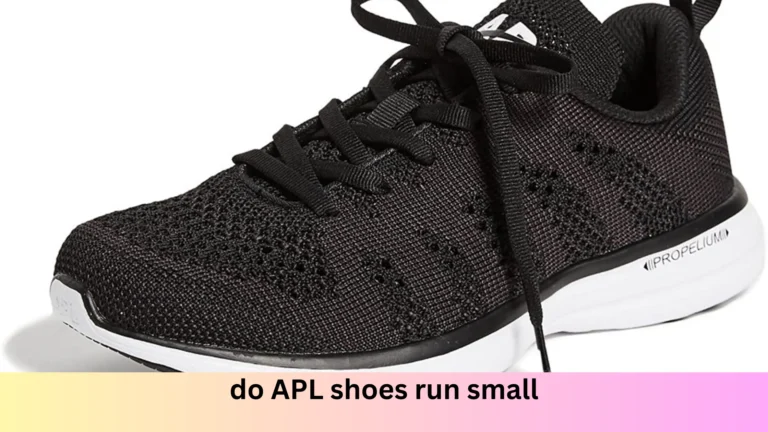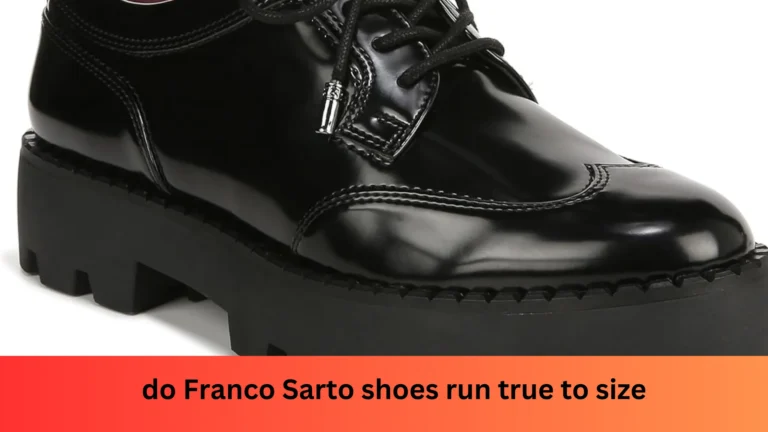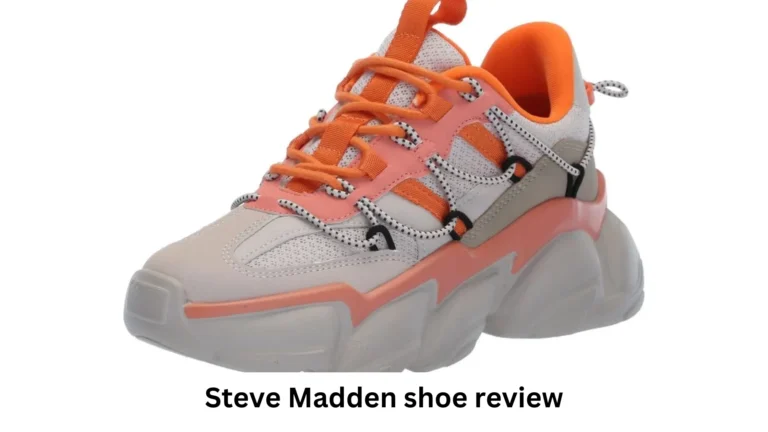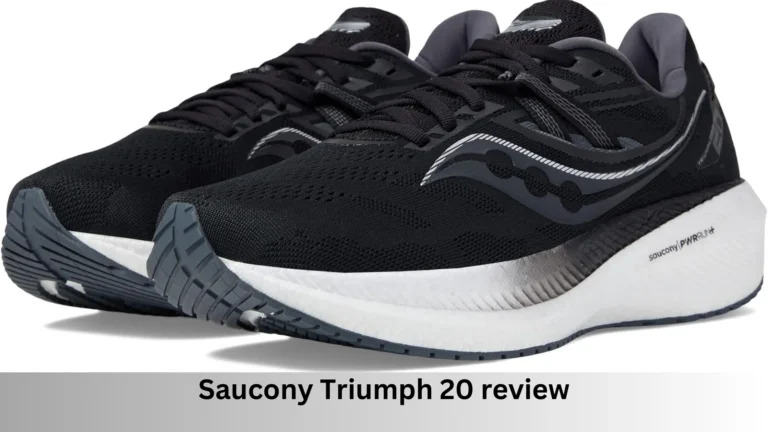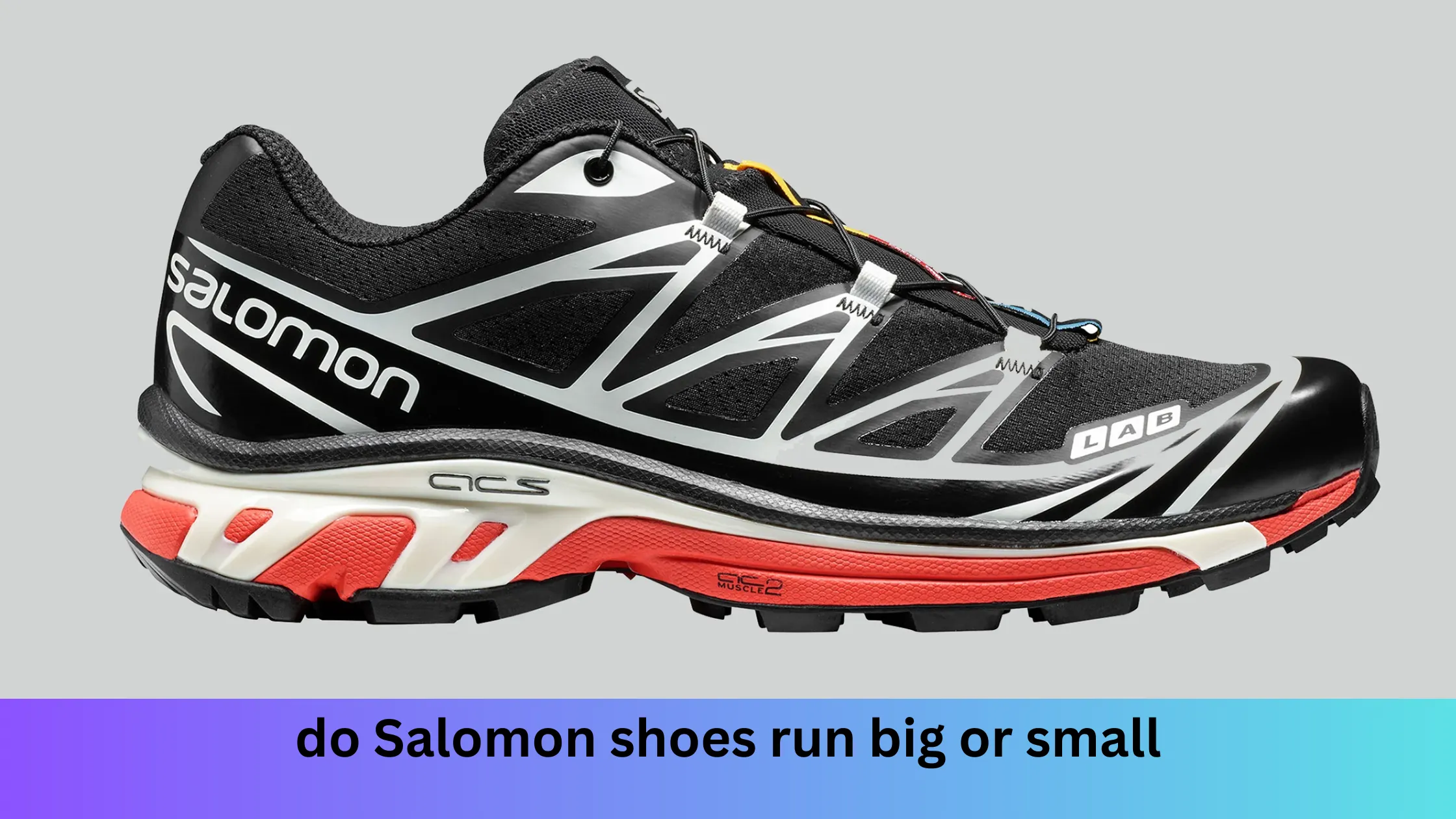
do Salomon shoes run big or small
Salomon is one of the most popular brands for outdoor enthusiasts. Whether you’re into hiking, trail running, or just exploring the outdoors, Salomon shoes are known for their high-quality performance and durability. But no matter how great the shoes are, the wrong size can ruin your entire experience.
Think about it—how can you enjoy a trail run when your toes are squished or sliding around? Proper sizing isn’t just about comfort; it’s about getting the best performance from your shoes. A good fit can help prevent blisters, improve stability, and make every step feel right.
This guide is here to answer a common question: Do Salomon shoes run big, small, or true to size? By the end of this post, you’ll have a clear understanding of how Salomon shoes fit and how to find the perfect size for your feet.
Understanding Salomon Shoe Sizing
Salomon is a well-known brand for outdoor footwear, but when it comes to sizing, people often wonder if their shoes fit as expected. Understanding Salomon’s approach to shoe sizing can save you from unnecessary returns or uncomfortable hikes. Let’s break it down in simple terms.
First off, Salomon is known for making shoes that are designed to fit snugly, especially for performance-focused activities like trail running or hiking. Why? A snug fit helps keep your feet stable when you’re on uneven terrain, climbing rocky trails, or dashing through the woods. However, snug doesn’t mean tight. Their shoes are crafted to give you just the right hold without pinching or causing discomfort.
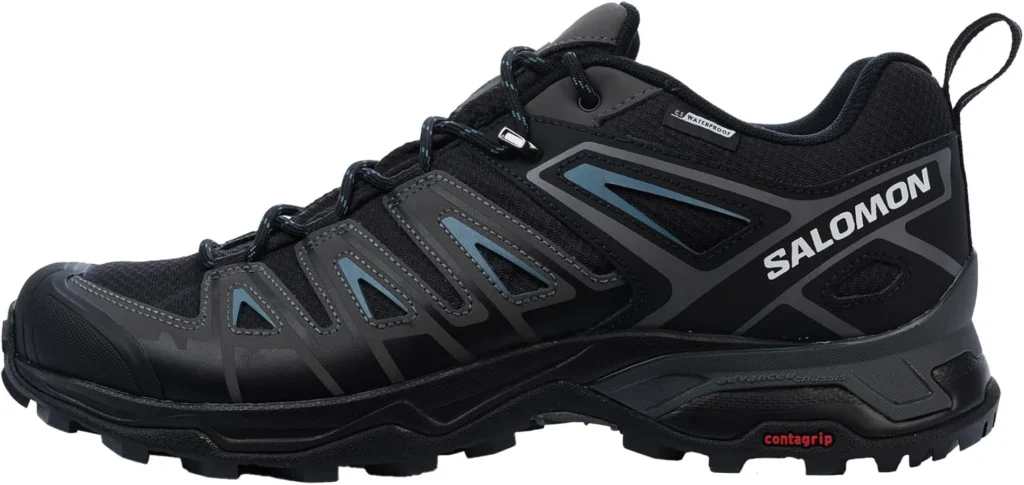
How Salomon Sizes Work
Salomon uses standard sizing, meaning their shoes are generally true to size for most people. If you wear a size 9 in most brands, chances are you’ll need a size 9 in Salomon too. That being said, there are a few things to consider:
- Activity Type Matters: Salomon trail running shoes tend to have a performance fit, which means they feel closer to your foot for better control. On the other hand, their hiking boots might feel roomier, especially in the toe box, to allow for thicker socks or foot swelling during long hikes.
- Style Differences: Some Salomon shoes, like their lightweight sneakers, may fit differently compared to their heavy-duty hiking boots. Always check the specific product details or reviews for the model you’re interested in.
- Slight Variations by Region: European sizing can sometimes feel a little different from US sizing. Salomon provides conversion charts, so be sure to double-check if you’re buying internationally.
Using Salomon’s Sizing Chart
Salomon offers a detailed size chart on their website. To get the perfect size, measure your foot from heel to toe, and match the length to their chart. This is especially helpful if you’re between sizes or have wider feet.
In short, Salomon sizing is reliable, but the fit can vary slightly depending on what you’re buying. For trail running, you might prefer a snug fit for better control, while for hiking, a little extra space in the toes can make a big difference in comfort.
Keep these points in mind, and you’ll have a much better idea of what to expect when picking your Salomon shoes.
Salomon Shoe Sizing:
| Shoe Type | Sizing Notes | Recommended Size Adjustment |
|---|---|---|
| Trail Running Shoes | Generally true to size but can feel snug due to tighter fit. | Consider sizing up if you prefer more room in the toe box. |
| Hiking Boots | Often run slightly small, especially for long hikes. | Size up by half a size to accommodate thicker socks. |
| Casual Shoes/Urban | Typically true to size, similar to standard sneakers. | No size adjustment needed unless you have wider feet. |
| Winter Boots | Tend to have a snug fit, as they are designed for warmth and stability. | Size up to allow room for thick socks and foot swelling. |
| Wide Feet (General) | Salomon shoes may feel tight on wider feet. | Choose models that offer wide-width options or size up. |
Do Salomon Shoes Run Big, Small, or True to Size?
When it comes to Salomon shoes, one of the most common questions is, “Do they fit true to size?” The short answer is: it depends on the type of shoe and how you plan to use it. Let’s break it down by the most popular categories of Salomon footwear.
For Trail Running Shoes
Salomon trail running shoes are known for their snug fit, and this is intentional. A close fit helps keep your foot secure during quick movements and uneven terrain. Many users find that Salomon trail runners fit true to size but might feel tight at first, especially around the midfoot.
If you have wider feet or prefer more room in the toe box, you might want to size up by half a size. This extra room can help avoid discomfort on longer runs. However, if you have narrow or average-width feet, your usual size should work well.
For Hiking Boots
Salomon hiking boots often lean toward true to size, but there’s a catch. Because hiking boots are meant for long treks and rough terrain, many people prefer to size up slightly. This gives extra space for thicker hiking socks and accounts for foot swelling during long hikes.
For example, if you wear a size 9 in sneakers, you might consider going up to a 9.5 in Salomon hiking boots, especially for multi-day trips. If you plan on lighter hikes or shorter adventures, sticking to your regular size should be fine.
For Everyday or Urban Shoes
Salomon’s casual or everyday shoes, designed for urban wear, generally fit true to size. These shoes don’t have the same snug fit as their trail or hiking counterparts, so they feel more like your average sneakers. You can confidently stick to your usual size for these.
Quick Tips for Fit
- Know Your Foot Shape: If you have wide feet, you might find Salomon’s fit a bit tight and may need to size up.
- Consider Your Activity: For activities like hiking, sizing up a bit is a good idea. For running, stick to a snug but comfortable fit.
- Try Before You Buy: Whenever possible, try on Salomon shoes with the socks you plan to wear during your activity.
Overall, Salomon shoes are well-designed to provide support, durability, and comfort, but getting the sizing right is key to enjoying all their benefits.
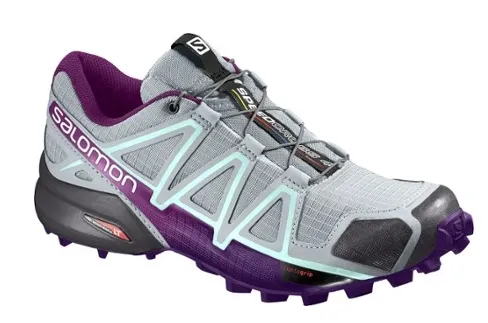
Factors Influencing Salomon Fit
When it comes to Salomon shoes, several factors can influence how they fit. Let’s break them down so you can better understand what to expect when trying on a pair.
Width and Arch Support
Salomon shoes are known for their performance-focused design, but what about the width? In general:
- For Narrow Feet: Salomon shoes often have a snug fit, which works well for people with narrow to average-width feet. If your feet are on the slimmer side, you’ll likely find them comfortable straight out of the box.
- For Wide Feet: If you have wider feet, some Salomon models might feel tight, especially around the midfoot. However, they do offer wide-fit options in select styles, which can be a lifesaver. Always check if the model you’re considering comes in a wide version.
As for arch support, Salomon shoes typically have a moderate to high arch support, which is great for people with a neutral or higher arch. If you have flat feet, you may need to use custom insoles for extra support.
Break-In Period
Many Salomon shoes, especially hiking boots and trail runners, can feel snug initially. Don’t worry; this is normal.
- Why? The materials used, like premium leather or Gore-Tex, are designed to mold to your feet over time.
- How Long? For most people, it takes a few wears (around 10–15 miles of activity) to fully break them in. During this time, the fit becomes more customized and comfortable.
Pro tip: Wear them with the socks you plan to use during your activities while breaking them in to get a realistic feel.
Material and Design
The material of the shoe plays a big role in how it fits and feels:
- Gore-Tex Models: These are waterproof but less stretchy. Expect a snugger fit, especially around the toe box. Consider going up half a size if you want more wiggle room.
- Mesh Designs: Lightweight and breathable, these tend to be more forgiving. If you have wider feet, mesh styles might be your best bet.
- Toe Box Shape: Salomon shoes generally have a tapered toe box, which might not work well for people who prefer a roomy front.
The design also depends on the activity. For example:
- Trail Running Shoes: These are designed to hug your feet for better grip and stability.
- Hiking Boots: These often provide a bit more space to accommodate thicker socks or swelling from long hikes.
By understanding these factors, you can better decide whether Salomon shoes will fit your feet comfortably. Always consider your foot shape, the activity you’re planning, and the specific shoe model before making a purchase.
Read Also: Do Giuseppe Zanotti Shoes Fit Small? Tips for Finding the Perfect Size
How to Find the Perfect Fit
Finding the perfect fit for your Salomon shoes doesn’t have to feel like a guessing game. Follow these simple steps to make sure your shoes fit like a glove (but for your feet).
Measuring Your Feet
Start with the basics: measuring your feet. This step is crucial because even a small difference in size can affect your comfort, especially during long hikes or runs. Here’s how to do it:
- Grab a Sheet of Paper
Place it on the floor against a wall. Stand on the paper with your heel touching the wall. - Trace Your Foot
Use a pencil to trace around your foot, keeping it as straight as possible. Repeat for the other foot, as sizes can differ slightly. - Measure the Length and Width
Use a ruler to measure from the back of your heel to the tip of your longest toe. Then, measure the widest part of your foot. - Compare with Salomon’s Size Chart
Match your measurements with Salomon’s official size chart, which is usually available on their website or with online retailers. If your size falls between two options, it’s better to size up for more comfort.
Trying Before Buying
If possible, visit a store and try on Salomon shoes. Here’s what to pay attention to:
- Toe Room: Your toes should have some wiggle space but shouldn’t slide forward. A thumb’s width of space at the front is ideal.
- Heel Fit: Your heel should feel snug, with no slipping when you walk or run.
- Width Comfort: The sides shouldn’t squeeze your foot uncomfortably. If they do, check if Salomon offers wide-width options for the style you’re eyeing.
Adjusting for Activities
Your sizing choice may depend on how you plan to use the shoes:
- For Running: A snug fit is better to keep your feet secure, especially on uneven trails.
- For Hiking: You might want to size up slightly to accommodate thick socks or swelling after hours of walking.
- For Everyday Wear: Stick to your usual size unless your feet feel unusually tight or loose.
Pro Tip: Break Them In
Even if your new Salomon shoes feel a little stiff at first, don’t panic. They often have a short break-in period. Wear them around the house or on short walks to let the materials soften and mold to your feet.
By following these steps, you’ll minimize the chances of discomfort or blisters. A good fit ensures you’ll enjoy every step, whether you’re tackling tough trails or just exploring your neighborhood.
Real-Life Experiences: What Customers Say
When it comes to Salomon shoes, customer feedback can tell you a lot about their sizing. Real people share real experiences, and their input can be incredibly helpful if you’re trying to figure out if these shoes will fit you perfectly.
Trail Runners Speak Up
Many trail runners say that Salomon trail running shoes tend to feel snug, especially around the midfoot. This isn’t necessarily a bad thing—trail runners need a close fit to keep their feet stable on uneven terrain. One user shared, “I went with my regular size, and while it was snug at first, the fit was perfect once I broke them in.”
Some runners with wide feet, however, feel that Salomon’s standard fit is a bit too tight. They often recommend sizing up or looking for Salomon models specifically designed for wider feet.
Hikers Chime In
Hikers often talk about sizing up when buying Salomon hiking boots. Why? Because hiking usually involves wearing thicker socks, and your feet might swell after hours of trekking. A customer on a popular outdoor forum mentioned, “I always go half a size up in Salomon hiking boots—it gives me room for socks and keeps my toes from hitting the front on descents.”
However, not everyone agrees. Some hikers say sticking to your usual size works just fine, as Salomon’s boots are designed with enough room to accommodate socks.
Everyday Users Share Their Thoughts
For those using Salomon shoes for casual wear, many report that the shoes fit true to size. A shopper on an online retail site noted, “I bought a pair of Salomon sneakers for everyday use, and my regular size fits perfectly. No need to size up or down.”
That said, a few customers pointed out that some models feel a bit narrow, so if you have wider feet, you might want to try them on first or consider going up half a size.
What’s the Verdict?
While experiences vary, here are some takeaways:
- Snug fit for trail running models—great for stability.
- Size up for hiking boots, especially if you’ll be wearing thick socks.
- True to size for casual shoes, but consider width if you have wider feet.
Customer feedback makes it clear that your choice might depend on how you plan to use the shoes and your foot type. If you’re unsure, read reviews on the specific Salomon model you’re interested in. Real stories often hold the best tips.
Also See: Franco Sarto Shoes: True to Size or Size Up?
Frequently Asked Questions (FAQs)
1. Do Salomon shoes stretch over time?
Salomon shoes can stretch slightly, but not by much. Their materials, like synthetic mesh or Gore-Tex, are designed for durability and performance, which means they hold their shape well. However, after a few uses, you might notice a small amount of give, especially in areas like the toe box or sides. This happens as the shoes adapt to the shape of your feet. If the shoes feel overly tight when you first try them, they’re probably not the right size, and sizing up might be a better option.
2. Should I size up for winter hiking in Salomon boots?
Yes, sizing up for winter hiking is often a smart move. Winter boots need to accommodate thicker socks and leave room for your feet to breathe, especially in cold weather when swelling might occur. A snug fit can make your feet feel cramped and cold. When trying on Salomon winter boots, wear the socks you plan to use during your hikes and ensure there’s a little wiggle room for your toes.
3. Are Salomon shoes suitable for wide feet?
Salomon shoes are generally designed with a medium width, which works well for most people. However, if you have wide feet, some styles might feel narrow, particularly their trail running shoes, which often have a snug fit for better performance. Look for Salomon models labeled “wide” or try their hiking boots, as these tend to have a more accommodating fit. If you’re unsure, trying them on or ordering from a retailer with free returns is a safe bet.
4. What’s the difference between men’s and women’s sizing in Salomon shoes?
The main difference is in the width and shape. Women’s Salomon shoes are typically narrower and have a slightly different shape around the heel and arch to fit the anatomy of a woman’s foot. Men’s shoes, on the other hand, are wider and more spacious overall. If you’re a woman with wider feet or a man with narrower feet, you might find the opposite gender’s shoes more comfortable.
Conclusion
Finding the perfect fit with Salomon shoes can feel like a bit of a puzzle, but it doesn’t have to be. The key takeaway? Salomon shoes are generally considered true to size, but your choice might depend on what you’re using them for and the shape of your feet.
If you’re buying Salomon trail running shoes, they tend to have a snug fit to give you better control on rough paths. On the other hand, if you’re getting hiking boots, you might want to go up half a size, especially if you plan to wear thick socks or if your feet tend to swell after hours of walking.
The best way to figure it out is to measure your feet, check Salomon’s size chart, and see if their measurements align with yours. Trying them on in a store is always a smart move, but if you’re shopping online, go with retailers that offer easy returns and exchanges.
Remember, everyone’s feet are different. Some people with wider feet might find Salomon shoes a bit tight, while others with narrower feet might feel like they fit just right. It’s not one-size-fits-all, but the effort to find the right size is worth it. After all, nothing beats the comfort of shoes that feel like they were made just for you.
Got a story to share about how Salomon shoes fit you? Drop a comment below—your experience might just help someone else find their perfect pair.

Hello, I am Natasha Rose. I am the founder of the website Best Running Shoes. I am from California, USA. I am a professional shoe analyzer and an employee in a shoe showroom. I like to provide information about all types of shoes.
